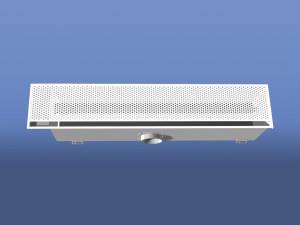Energy Efficiency – Using beams to satisfy sensible room loads greatly reduces the supply air volume required (typically by 60-80%). This can lead to reduced fan power requirements and associated energy savings. Additional savings are derived from: Reduction or elimination of reheat Chiller efficiency Taking advantage of free cooling through a DOAS in locations where the climate is appropriate Quiet Operation – The reduction in air-side mechanical equipment inherent of a hydronic system results in less noise, thus a quieter, more comfortable occupant experience. Passive beams produce an NC level under 15, while active beams usually produce a NC level under 30 (depending on air volume and duct size.) The reduced supply air volume of a hydronic system reduces ductwork requirements, resulting in the ability to reduce plenum heights. This allows beam systems to be installed in tight spaces, and creates the potential for lower construction costs, higher ceilings, and more usable floor space. In addition, the air handling equipment may be able to be downsized – saving cost and potentially allowing it to be moved indoors. Reduced Maintenance – Due to the reduction in moving parts and mechanical equipment associated with beams, these systems typically have lower maintenance costs than all-air systems.

